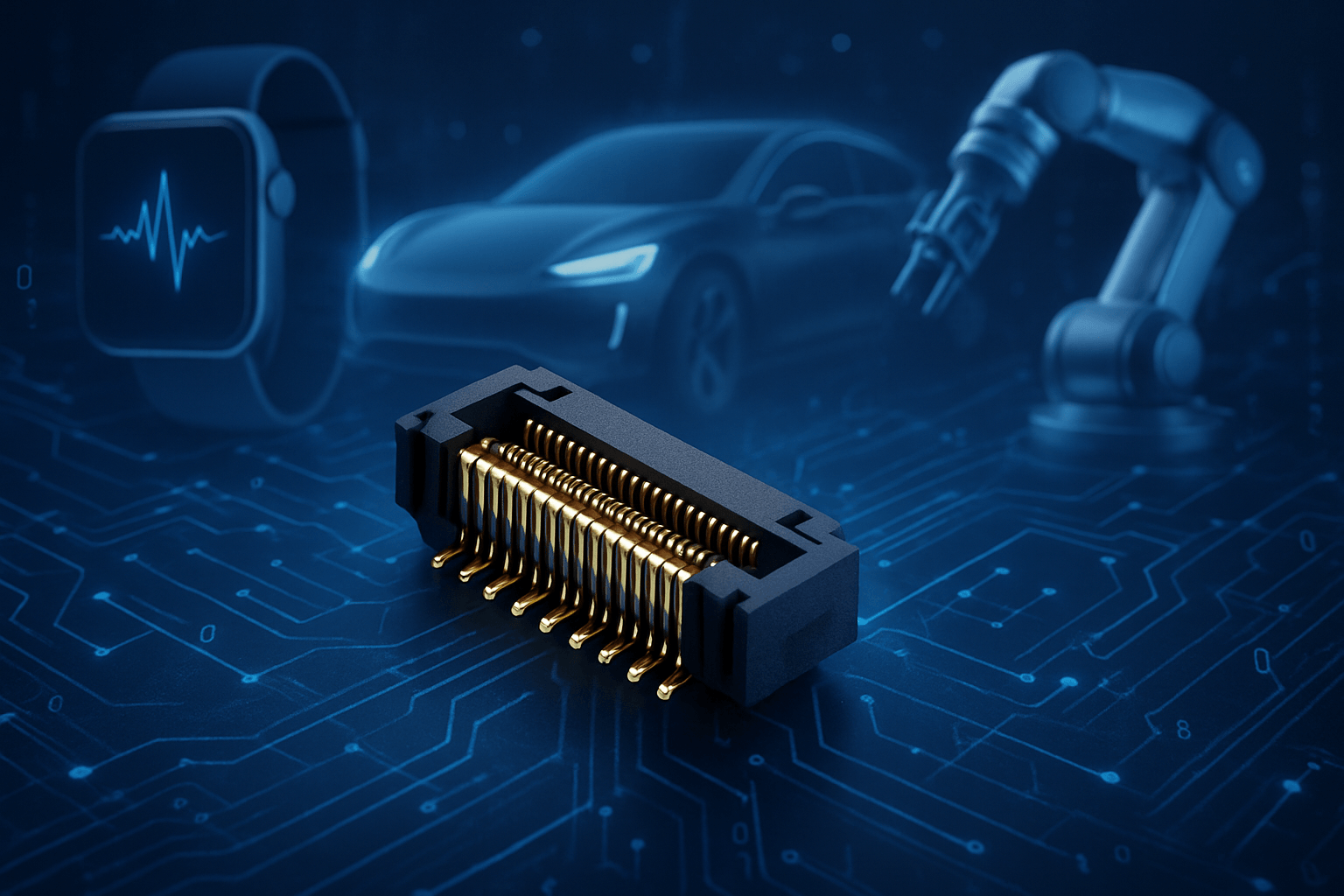Miniaturization in Connectors: Challenges and Advantages
As modern electronic systems continue to pursue both higher performance and smaller form factors, miniaturization has become a defining trend in the connector industry. From smart wearables and medical devices to autonomous vehicles and industrial robotics, the dual demands of space constraints and functional integration are driving connectors toward smaller sizes, higher densities, and greater capabilities.

Why Connector Miniaturization Matters
The widespread adoption of edge computing, AI chips, and multi-sensor architectures presents greater challenges in PCB layout. Engineers must achieve high-speed transmission, mechanical stability, and maintainability—all within compact spaces. Traditional connectors are becoming too bulky for such applications, making miniature connectors an essential solution.
In automotive and industrial automation, increasing system integration demands smaller, more reliable connectors. Well-designed miniature connectors not only reduce PCB footprint, but also support multi-signal transmission, shielding performance, and long-term mechanical durability.
Technical Challenges of Miniature Connectors
While miniature connectors offer clear advantages, they also present significant design and manufacturing challenges:
· Reduced Mechanical Strength: Smaller sizes mean thinner terminals and housings, increasing susceptibility to mating fatigue and vibration.
· Limited Signal Integrity: Tight spacing and high-density routing increase the risk of crosstalk and impedance mismatches, requiring precise shielding and material selection.
· Lower Thermal Capacity: Small terminals under high current loads can lead to heat buildup, requiring optimized copper layouts and thermal design.
· Assembly and Inspection Complexity: Miniature components require higher accuracy in SMT, soldering, and automated inspection (AOI), raising manufacturing demands.
Design Innovations in Miniature Connectors
To address these challenges, manufacturers are enhancing connector structures through:
· Ultra-fine pitch terminals with robust locking features
· Staggered or offset contact layouts to reduce crosstalk
· Hybrid signal-power interfaces for increased integration
· SMT-compatible housings for automated production
Key Applications of Miniature Connectors
In space-constrained and highly integrated electronic systems, miniature connectors have become essential components enabling reliable connectivity and functional density. The following examples illustrate their practical use across various sectors:
· ADAS Systems in Vehicles: Miniature connectors enable reliable links between control units, image sensors, and radar modules
· Portable Medical Devices: Products like POCT testers and wearable monitors demand compact, durable connectors resistant to sterilization
· Smart Wearables: In smartwatches and AR glasses, miniature connectors must endure movement wear and maintain signal stability
· Industrial IoT Nodes: Field-deployed devices require small, rugged connectors to ensure stable data communication
As device integration continues to grow, miniature connectors will play a key role across multiple industries. Connector manufacturers must invest in structural optimization, electrical simulation, and custom design capabilities. With years of experience in connector development, Greenconn offers a range of board-to-board and wire-to-board products designed for miniature applications. These solutions meet IEC standards and pass stringent mating cycle tests, making them ideal for automotive camera modules, industrial sensors, and handheld medical devices.



